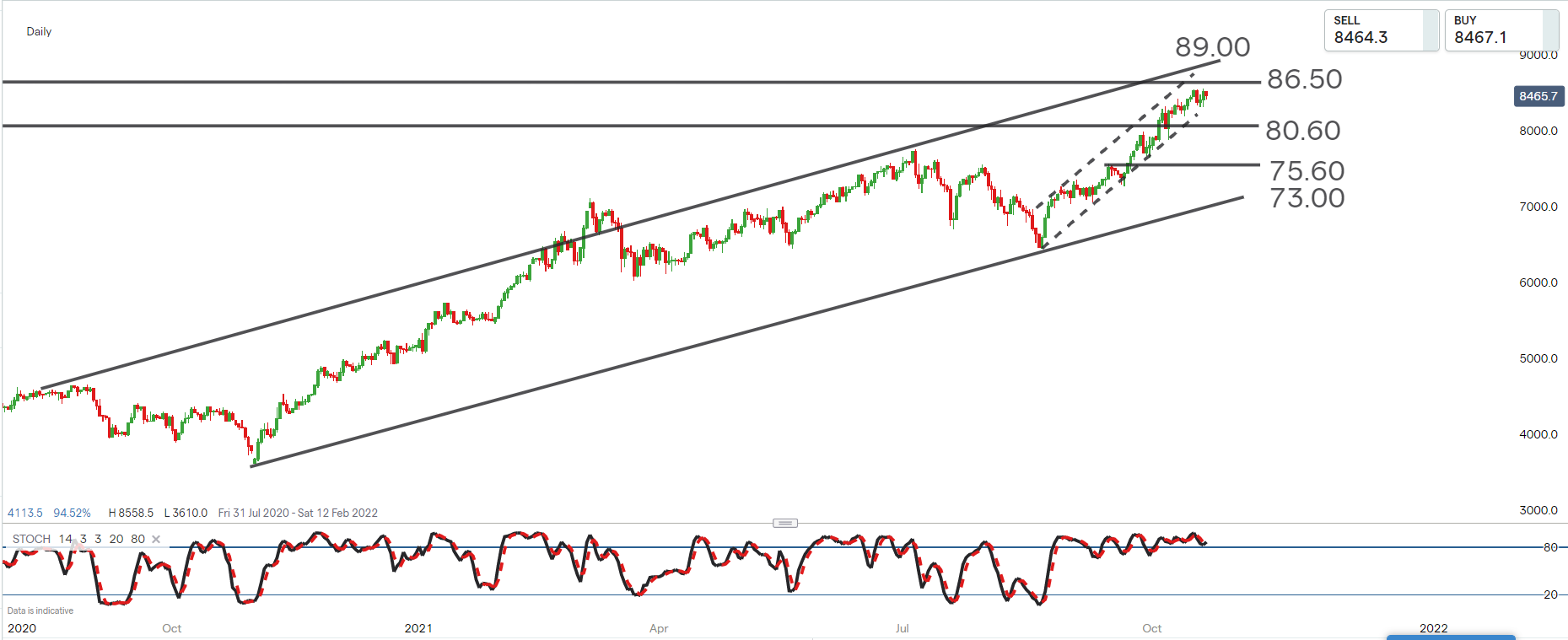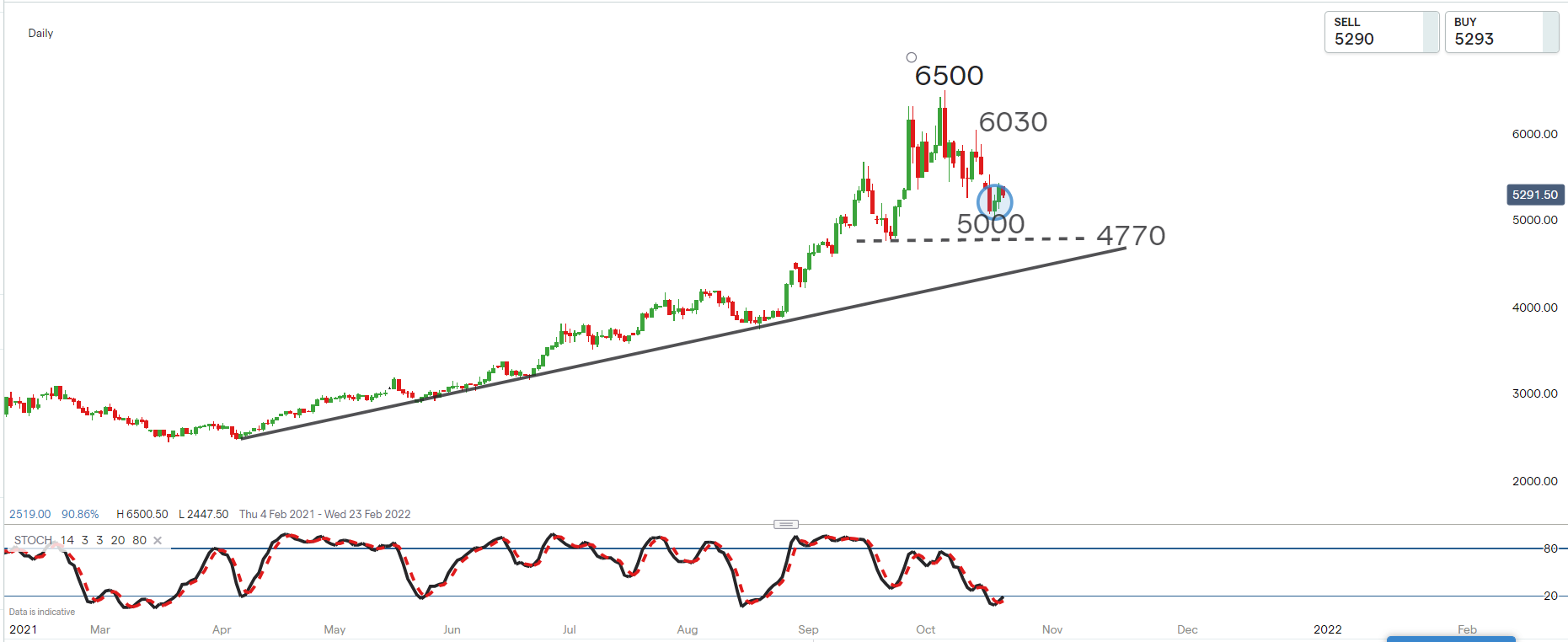The global energy crisis explained
The global energy crisis explained
In this article we break down the current global energy crisis and look at effects on commodity prices and inflation.
 Source: Bloomberg
Source: Bloomberg
Global energy crisis explained
What is the global energy crisis?
The current energy crisis is a disruption in the availability and supply of energy resources to the large parts of the global economy, amidst increasing demand.
Which regions are being affected by the energy crisis?
Major economies such as the US, China, Europe and India are currently being affected by the global energy crisis.
Why are these regions being impacted?
There are varying reasons across jurisdictions which are contributing to the current crisis.
Some of these issues are as follows:
- Energy demands globally have picked up as post-Covid-19 pandemic global economic recovery
- A cold winter and hot summer as well as an economic growth has equated to electricity shortages in China
- China now stockpiling domestic coal and gas reserves
- Russia has limited gas supply to Western Europe
- Low and diminishing coal inventory levels in India
- Much of Europe mainly use gas for heating, Europe is moving into winter and inventories are low
- Organisation of the Petroleum Exporting Countries (OPEC) oil production increase marginal not meeting expected future demand
- Supply chain or logistic disruptions to supply of natural resources
How are energy prices reacting to the crisis?
Fossil fuels which include coal, natural gas and oil still account for the vast majority of global energy needs. As demand outstrips supply we are seeing an exponential rise in these commodity prices.
Year to date moves in these commodities as of 21 October is as follows:
- Brent crude oil: +63%
- Natural Gas: +101%
- Coal: +179%
How can the energy crisis affect inflation and the broader economy?
Higher energy costs feed into higher inflation across a broad basket of items directly and indirectly such as electricity, transportation, food etc.
In the US alone (the world’s largest economy) we are seeing consumer price index (CPI) data highlighting inflation currently sustaining above 5%, where the US Federal Reserve bank (Fed) targets price stability at around 2%. Higher inflation if not transitory will pressure the tightening of monetary policy i.e. interest rates. Rising interest rates while aimed at stabilizing price inflation, can slow economic growth and in turn negatively affect employment.
The below graph shows the monthly CPI inflation print since October 2020.
 Source: Tradingeconomics
Source: Tradingeconomics
How long will the energy crisis last?
It is uncertain as to how long the current energy crisis will persist. However, demand side assumptions for energy are higher in the colder months and the suggestion is that problems could in turn persist until at least the end of US and European winter this year.
Supply chain bottlenecks which not only affect commodity prices but a whole host of goods in general, are likely to persist into the new year and at least the first quarter (Q1) of 2022.
Brent crude technical analysis
 Source: ProRealTime
Source: ProRealTime
Oil prices continue to grind higher in lieu of limited production increases amidst increasing demand and a global energy crunch underway.
Brent crude while remaining in overbought territory still trades firmly within a strong uptrend. We continue to look for short-term corrections in oil to find long entry, with 86.50 and now 89.00 our longer-term upside targets.
Natural Gas – technical analysis
 Source: ProRealTime
Source: ProRealTime
The long-term trend for Natural Gas remains up. In the short term, a correction of this uptrend looks to have ended with a bullish price reversal (circled blue). The bullish price reversal is supported by the oversold indication on the stochastic indicator.
These bullish indications in technical analysis terms favouring renewed gains with 6030 the initial upside resistance target. Traders who are long might consider using a close below the reversal low at 5000 as a stop loss indication for the trade.
Summary
- A variety of factors including a post-Covid-19 pandemic economic recovery and supply chain disruptions are contributing to a global energy crisis at present
- These has equated to soaring energy costs globally
- Fossil fuels, which include oil, natural gas and coal account for the bulk of global energy demands and in turn prices have risen considerably
- The energy crisis is expected to continue until at least the end of 2021
- Rising energy costs are further fueling inflationary concerns
- Higher inflation if sustained can weigh on global economic growth and employment through a more aggressive tightening of monetary policy







0 Comments
Recommended Comments
There are no comments to display.
Create an account or sign in to comment
You need to be a member in order to leave a comment
Create an account
Sign up for a new account in our community. It's easy!
Register a new accountSign in
Already have an account? Sign in here.
Sign In Now